The end of fiat currencies
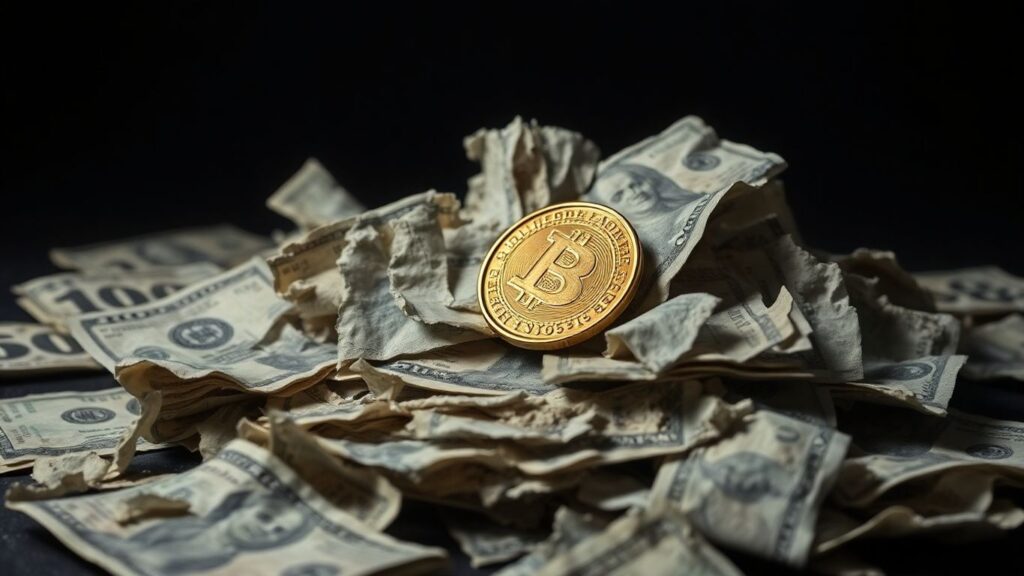
It feels like we’re hearing more and more about the end of fiat currencies these days. You know, those paper bills and digital numbers that governments print. For years, they’ve been the backbone of our economy, but lately, things feel a bit shaky. People are talking about what happens when the trust in these currencies starts to fade. It’s a big topic, and honestly, it’s got a lot of us wondering what comes next for our money.
Key Takeaways
-
The dollar’s long-standing dominance in the global financial system is showing signs of weakening, with other nations looking for alternatives.
-
Fiat currencies, which aren’t backed by physical assets like gold, rely heavily on trust in the issuing government, making them vulnerable.
-
Governments can print more money with fiat systems, which can lead to inflation and a decrease in the currency’s value over time.
-
While cryptocurrencies like Bitcoin have emerged as alternatives, their speculative nature and inability to function as stable currencies suggest they may not replace fiat.
-
History shows that when fiat currencies fail, societies often return to more tangible forms of value, like gold, as a reliable store of wealth.
The Inevitable Decline Of Fiat Currencies

It’s becoming pretty clear that the days of the dollar being the world’s go-to currency are numbered. We’re seeing cracks appear in the whole fiat system, and it makes you wonder what’s next. For a long time, we’ve just accepted that governments back our money, but that trust seems to be fading.
The End Of The Dollar’s Hegemony
The global financial stage is shifting. For decades, the U.S. dollar has been the dominant force, the currency everyone else traded in and held onto. But that era feels like it’s winding down. Events like the BRICS summit show that countries are looking for alternatives, trying to move away from relying so heavily on the dollar. When a currency’s value is mostly based on faith, that faith can waver, and when it does, holders might start selling off. This could have a ripple effect, impacting other currencies tied to the dollar’s fate. It’s a sign that the world is looking for a more stable financial footing, moving beyond the current dollar-centric model.
Cracks In The Fiat System
The system we’ve relied on for so long is showing signs of strain. Think about the Great Financial Crisis in 2008, or even more recently, the massive money printing during the pandemic. These events highlight a core issue: the tendency for fiat currencies to be debased through monetary expansion. When central banks print more money to solve economic problems, the value of each existing dollar goes down. It’s like trying to fix a leaky boat by adding more water – it might keep you afloat for a bit, but it doesn’t fix the hole. This constant devaluation erodes confidence over time. We’re seeing bond yields rise globally, which suggests that people are losing faith in the idea that inflation is just a temporary blip. The reality might be more complex, a mix of rising prices and economic slowdown, a situation that feels eerily familiar to those who remember the stagflation of the 1970s.
A Return To Gold
So, what happens when faith in fiat money falters? History offers a clue. When governments can’t maintain the value of their currency, people tend to look for something tangible, something with intrinsic value. For centuries, that something has been gold. While some are looking at cryptocurrencies as a potential replacement, their speculative nature and inability to function as a true currency make them unlikely candidates for the long run. Gold, on the other hand, has a proven track record as a store of value. It’s a physical asset that can’t be easily created out of thin air by a central bank. As the current fiat system faces increasing pressure, a return to gold as a stable monetary anchor seems not just possible, but probable. It’s a move back to a system that has served humanity for millennia, offering a reliable hedge against the uncertainties of government-backed money.
Why Fiat Currencies Are Losing Trust

It feels like lately, everyone’s talking about money, and not in a good way. You hear about inflation, prices going up, and that nagging feeling that your hard-earned cash just doesn’t stretch as far as it used to. This isn’t just random bad luck; it’s a sign that people are starting to question the value of the money they use every day. When trust erodes, the foundation of any currency starts to crumble.
Debasement Through Monetary Expansion
Think about it: governments and central banks can, in theory, print more money whenever they want. This isn’t like finding more gold; it’s a decision. While this flexibility can be useful, it also means the value of each dollar, euro, or yen can be diluted. It’s like adding more water to a glass of juice – it’s still juice, but it’s not as concentrated. This process, often called monetary expansion, can lead to inflation, where prices rise because there’s more money chasing the same amount of goods and services. It’s a tricky balancing act, and when it goes wrong, the purchasing power of your money takes a hit.
The Liquidity Illusion
Sometimes, it seems like there’s plenty of money flowing around. You see headlines about economic growth and easy credit. But is it real wealth, or just an illusion? This abundance of liquidity can sometimes mask underlying problems. It might feel like things are good because credit is cheap and readily available, but this can also lead to asset bubbles – think housing or stock market booms that aren’t supported by actual economic value. When these bubbles burst, the illusion of wealth disappears, leaving people exposed.
Loss Of Faith In Government Backing
Ultimately, fiat money is backed by the
The Rise Of Alternative Monetary Systems
It feels like every other day there’s a new headline about something other than dollars or euros being the next big thing in money. We’re seeing a lot of talk about cryptocurrencies and, of course, gold is always in the mix. It’s a sign that people are starting to question the old ways of doing things, especially when it comes to our cash.
The Speculative Nature Of Cryptocurrencies
Cryptocurrencies, like Bitcoin, popped up promising a new kind of money, free from government control. And for a while, it seemed like they might actually replace traditional cash. People got really excited, and prices shot up. But let’s be real, a lot of that excitement was more about making a quick buck than actually using it to buy groceries. It’s become more of a gamble than a reliable way to pay for things.
-
Volatility: Prices can swing wildly, making it hard to know what your money will be worth tomorrow.
-
Limited Use Cases: While some places accept crypto, it’s still not common for everyday purchases.
-
Regulatory Uncertainty: Governments are still figuring out how to deal with it, which adds another layer of risk.
Bitcoin’s Inability To Function As Currency
When you think about what money is supposed to do – be a stable way to store value and easily exchange goods – Bitcoin just doesn’t quite cut it. The transaction fees can be high, and it can take a while to confirm a payment. Imagine trying to buy a coffee and waiting ten minutes for the transaction to go through! That’s not exactly practical for daily life. It’s more like digital gold, something you hold onto, rather than something you spend.
The dream of a decentralized digital currency that’s also a practical medium of exchange is a tough one to realize. The very features that make some cryptocurrencies attractive as an investment often make them difficult to use for everyday transactions.
The End Of The Cryptocurrency Phenomenon
So, what does all this mean for crypto? It’s hard to say for sure, but it looks like the wild west days might be over. As governments get more involved and the hype dies down, we might see a lot of these digital coins fade away. The ones that survive will likely be the ones that can actually prove their worth beyond just speculation. It’s a shakeout, and not everyone will make it through.
|
Cryptocurrency |
Market Cap (Approx.) |
Primary Use Case (Perceived) |
|---|---|---|
|
Bitcoin |
$1 Trillion |
Store of Value / Speculation |
|
Ethereum |
$400 Billion |
Smart Contracts / DApps |
|
Dogecoin |
$20 Billion |
Meme / Community |
Historical Precedents For Currency Collapse
History is littered with examples of currencies that lost their value, sometimes dramatically. These aren’t just abstract economic theories; they are real-world events that wiped out savings and caused immense hardship. Looking back at these collapses can offer some serious warnings about the stability of our current money system.
Lessons From The Great Financial Crisis
The 2008 Great Financial Crisis (GFC) was a wake-up call for many. While the global financial system didn’t completely collapse, it certainly showed its fragility. We saw major banks teetering on the edge, and governments had to step in with massive bailouts to prevent a total meltdown. This event really made people question the stability of the financial institutions and the currencies they managed. It was a stark reminder that even seemingly solid systems can have deep cracks. The aftermath saw a renewed interest in assets like gold, as people sought safer havens for their wealth, a trend that seems to be repeating itself today. The GFC showed us that the system isn’t as robust as we might have thought, and that confidence is a fragile thing. It was a significant event that led to a radical rethinking of what constitutes money.
Zimbabwe’s Hyperinflationary Spiral
Zimbabwe’s experience with hyperinflation in the late 2000s is a textbook case of currency failure. The government printed money at an astonishing rate to cover its expenses, leading to prices spiraling out of control. At its peak, inflation was so bad that people needed wheelbarrows full of cash just to buy basic groceries. The Zimbabwean dollar became virtually worthless. It’s a chilling example of what happens when a government loses control of its monetary policy. The country eventually had to resort to using foreign currencies, like the US dollar, to get by.
The Weimar Republic’s Monetary Failure
Perhaps one of the most infamous examples is the Weimar Republic in Germany during the early 1920s. After World War I, the government printed vast amounts of money to pay reparations and fund its operations. The result was catastrophic hyperinflation. The German Mark lost its value so rapidly that people used it as wallpaper or fuel for fires. This period of extreme monetary instability had profound social and political consequences, contributing to the instability that followed. It serves as a powerful historical lesson about the dangers of unchecked money printing and the devastating impact it can have on a nation’s economy and its people. The lessons from these historical events are not just academic; they are practical warnings about the potential consequences of monetary mismanagement.
The Future Of Money Beyond Fiat
The way we think about money is changing, and it’s happening fast. For a long time, we’ve relied on government-issued paper money, or fiat currency, to buy our groceries and pay our bills. But as trust in these systems starts to wobble, people are looking for alternatives. It’s not just about a new kind of digital coin; it’s a whole new way of seeing value.
Gold As A Store Of Value
Gold has been around for ages, and for good reason. It’s something tangible, something real, that people have trusted for centuries. When governments print too much money and its value starts to drop, gold often holds its own. Think of it like a safe harbor when the economic seas get rough. It doesn’t really grow or shrink in value based on someone’s decree; its worth comes from its rarity and how much people want it.
-
Limited Supply: Unlike paper money, you can’t just create more gold out of thin air. This scarcity helps it keep its value over long periods.
-
Historical Trust: For thousands of years, gold has been used as a way to store wealth. This long track record gives people confidence.
-
Global Acceptance: Gold is recognized and valued all over the world, making it a reliable asset regardless of borders or specific government policies.
Decentralized Assets And Commodities
Beyond gold, we’re seeing a rise in other things that could become important in a post-fiat world. This includes things like other precious metals, certain agricultural goods, and even digital assets that aren’t controlled by any single government or bank. The idea is to spread risk and not put all our eggs in one basket, especially when that basket is a fiat currency that can lose value quickly.
The shift towards decentralized assets isn’t just a trend; it’s a response to the inherent vulnerabilities of systems where value is based solely on trust in a central authority. When that trust erodes, the need for tangible or independently verifiable value becomes paramount.
A New Financial Landscape
So, what does this all mean for us? It means we might be heading towards a financial system that’s more diverse. Instead of just one type of money, we could have a mix. Maybe some gold for long-term savings, some digital assets for quick transactions, and perhaps even some commodities playing a role. It’s about having options and not being completely dependent on the decisions of a few.
-
Diversification: Spreading your assets across different types of value stores can protect you from the failure of any single one.
-
Increased Choice: A multi-asset system gives individuals more control over their financial future.
-
Resilience: A system with multiple forms of value is less likely to collapse entirely if one part of it faces problems.
Understanding The Mechanics Of Fiat Money
So, how does this whole fiat money thing actually work? It’s not as complicated as it sounds, really. Basically, it’s money that a government says is legal tender. Think of it like this: the government declares, ‘This paper, or these numbers in your bank account, are worth something, and you have to accept them for debts.’ That’s the core idea behind chartalism. Unlike the old days when money was backed by gold or silver, fiat money doesn’t have any intrinsic value. Its worth comes from the trust people place in the government that issues it. We accept it because we believe others will too, and because the government says we have to pay taxes with it. It’s a bit of a social contract, if you think about it.
Government Backing And Chartalism
The whole concept hinges on government decree. The Latin word ‘fiat’ means ‘let it be done,’ and that’s pretty much what’s happening. The government issues the currency, and by law, it must be accepted as payment. This backing is what gives it value, not because the paper it’s printed on is precious, or because you can trade it in for gold. It’s a system built on faith and legal obligation. This is why governments demanding taxes in their own currency is so important; it creates a constant demand for that money. Without this government backing, it’s just paper or digital entries with no real worth.
Flexibility For Central Banks
One of the big selling points for fiat systems is the flexibility it gives central banks. They can adjust the money supply to try and manage the economy. Need to stimulate growth? They can print more money or lower interest rates. Worried about inflation? They can try to pull money out of circulation. This ability to fine-tune monetary policy is a major reason why most countries moved away from commodity-backed currencies. The old gold standard, for instance, could be quite rigid and didn’t always keep pace with growing economies. Fiat money allows for more responsive economic management, though as we’ll see, this flexibility comes with its own set of risks.
The Risks Of Unlimited Supply
But here’s the flip side: that flexibility can be a double-edged sword. Because there’s no physical limit like gold reserves, there’s always the temptation to print too much money. When a government overdoes it, you get inflation, where your money buys less and less. In extreme cases, this can spiral into hyperinflation, making the currency practically worthless. We’ve seen this happen before, and it’s a stark reminder that while fiat money offers control, it also carries the danger of mismanagement. It’s a delicate balancing act, and when the balance is lost, the consequences can be severe. The value of fiat money is greater than the value of its metal or paper content, but only if managed responsibly [9d48].
Here’s a quick look at how money creation works in a fiat system:
-
Central Bank Actions: The central bank can directly inject money into the economy through various means, like buying government bonds. This increases the reserves of commercial banks.
-
Commercial Bank Lending: When banks have more reserves, they can lend more money to businesses and individuals. When a bank issues a loan, it essentially creates new money in the economy.
-
Loan Repayment: Conversely, when loans are paid back, that money is effectively ‘deleted’ from circulation.
It’s a dynamic process, and the total amount of money circulating can change quite a bit based on these actions and economic conditions.
So, What’s Next?
It’s becoming pretty clear that the whole fiat money thing, the kind of money we’ve used for decades, might be on its way out. We’ve seen how printing too much can cause problems, and relying on just ‘faith’ in the government isn’t always a solid plan. While some people are looking at things like Bitcoin, it’s not really built to be the money we use every day. It seems like we might be heading back to something more solid, like gold, which has held its value for ages. It’s a big shift, and honestly, nobody knows exactly how it will all play out, but sticking with what’s worked for a long, long time feels like a safer bet than chasing the latest digital trend.
Frequently Asked Questions
What exactly is fiat money?
Think of fiat money as the paper bills and coins we use every day, like dollars or euros. It’s not backed by anything physical, like gold. Its value comes from the government that says it’s official money and from people agreeing to use it for buying and selling things.
Why are people worried about fiat money ending?
Governments sometimes print too much money, which can make it worth less over time, like a balloon that gets too full. When this happens too much, people start to lose trust in the money, and it can cause big problems, similar to what happened in places like Zimbabwe or the Weimar Republic long ago.
If fiat money ends, what will replace it?
Some people think cryptocurrencies like Bitcoin will take over. However, many experts believe these digital currencies aren’t stable or practical enough to be real money for everyday use. Historically, when governments’ money systems have failed, people have often turned back to gold.
What’s the big deal with the U.S. dollar losing its top spot?
For a long time, the U.S. dollar has been the main currency used in international trade. If other countries start using different currencies or a new system, it could change how global business works and affect the value of the dollar.
How does printing more money affect its value?
When a government prints a lot more money, it’s like making more copies of something that was once rare. This can make each individual piece of money worth less, leading to prices going up for everything. This is called inflation.
What are the good things about fiat money?
Fiat money gives governments and central banks flexibility. They can adjust the money supply to try and keep the economy steady, like preventing big job losses or controlling prices. It’s also cheaper to produce than money backed by gold.

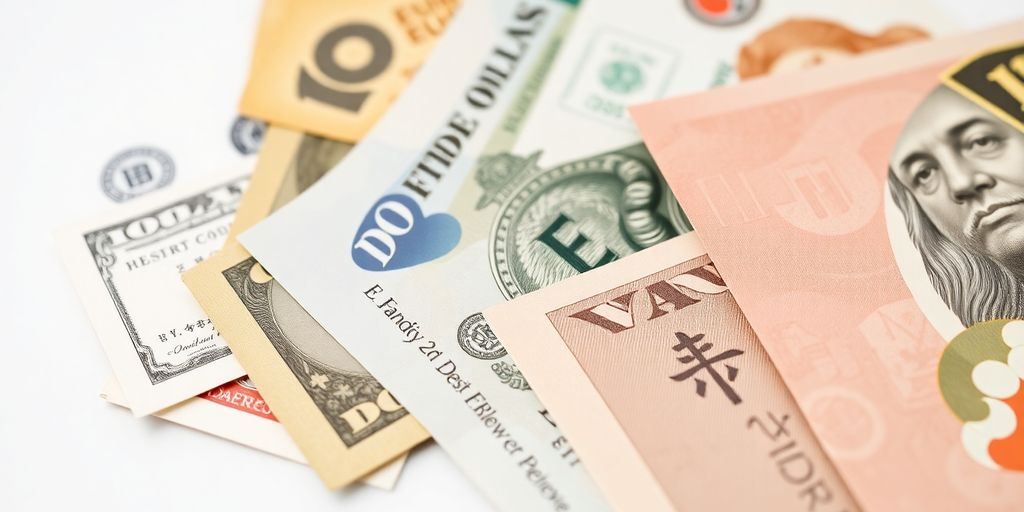


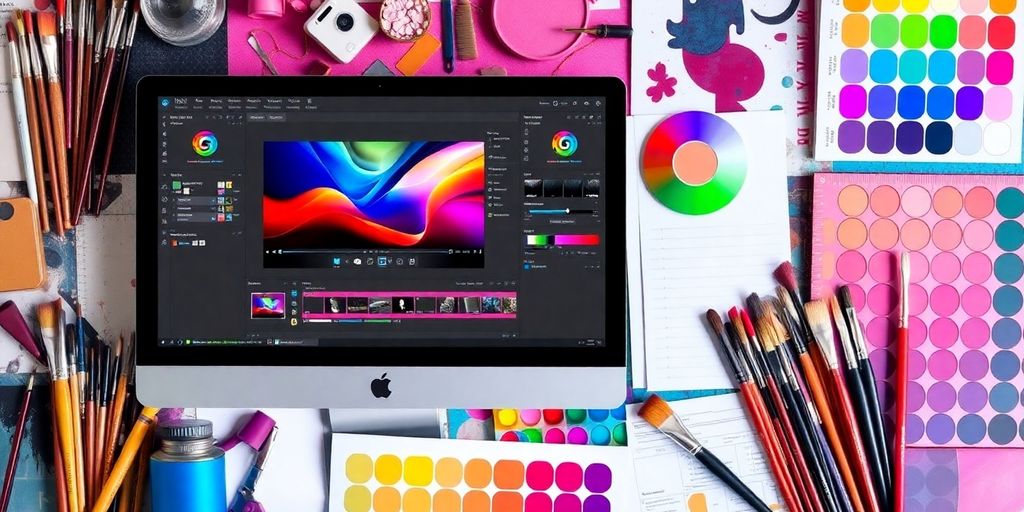
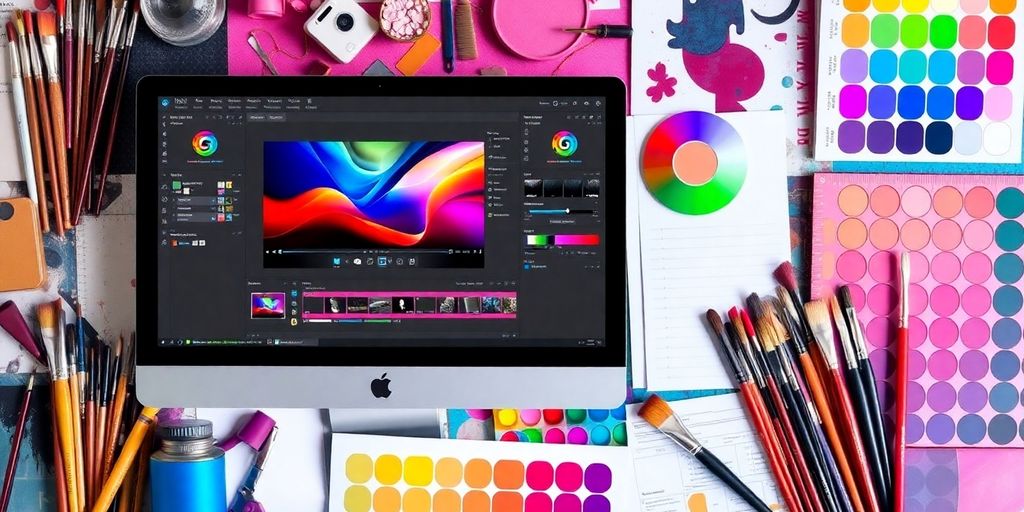
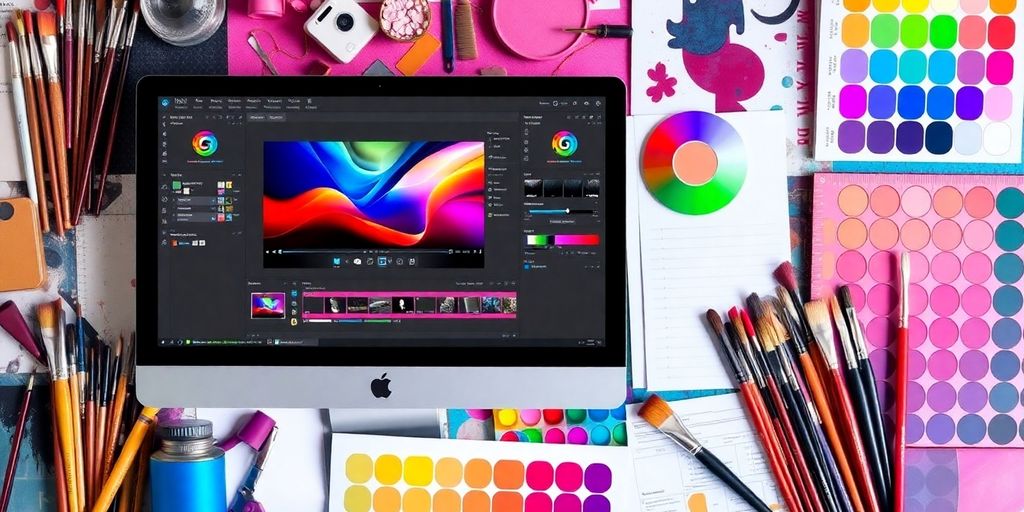
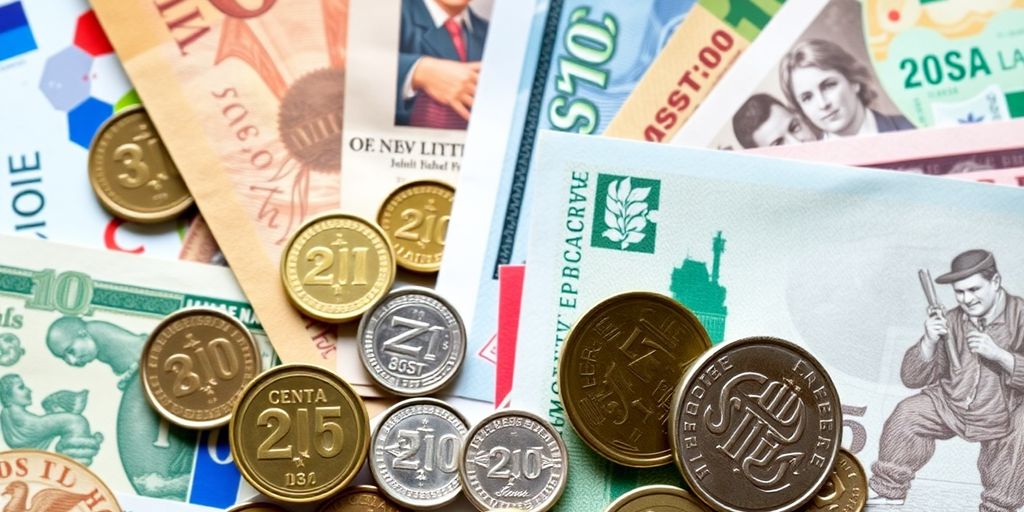
Responses